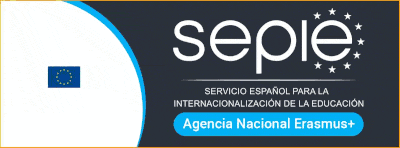
The specific objective of this work package is to ensure the widespread promotion and dissemination of the ViReal4STEM project’s results throughout its lifecycle. The aim is to engage a broad audience and ensure that the project’s key outcomes reach stakeholders, decision-makers, educators, and students both at national and EU levels.
The specific objectives for the strategy are:
Increase...the visibility of the project and its activities among the target audience, especially students, educators, and other stakeholders in STEM education. This will help raise awareness of the project’s objectives and outputs, particularly the VR app and pedagogical framework for gender-inclusive STEM teaching.
Promote...the project’s impact by showcasing how the use of virtual reality in STEM education contributes to bridging the gender gap, inspiring students, and promoting inclusivity in traditionally male-dominated fields.
Engage...with key stakeholders including educators, policymakers, educational institutions, and industry partners to ensure that the project results are adopted, utilized, and integrated into existing educational practices. This will enhance the long-term sustainability of the project’s outcomes.
Facilitate...the utilization of the project’s results, ensuring that the VR app and pedagogical framework are widely disseminated and applied in classrooms to promote inclusivity and equity in STEM education.
Foster...stakeholder involvement, creating opportunities for cross-sector collaboration and knowledge exchange to ensure that the project’s impact extends beyond the initial target groups and reaches a broader audience.
S&P - target groups
Target groups.
Secondary School Strudents
The main focus of the project is on secondary school students, particularly those aged between 13 and 18, as this is a crucial period in their educational journey. At this age, students are faced with important decisions about their future careers, including whether to enter the workforce or pursue further education. Engaging them in STEM fields during this phase is essential to increase their interest and guide their future career choices. Virtual reality (VR) technology will be used to create immersive experiences that help students visualize various STEM career paths, encouraging them to explore these fields more deeply.

STEM Teachers
The second key group for the project consists of STEM teachers who will play an essential role in implementing the project’s resources and methodology. Teachers from a variety of disciplines, such as physics, chemistry, biology, mathematics, technology, and geology, will be involved. They will receive training and resources to help them incorporate the VR app and the gender-inclusive pedagogical framework into their teaching practices.
Sharing, Promotion & Communication Strategy
The foundational strategy outlines the framework and approach for sharing, promoting and communicating the project's results. It defines the tools, methods and channels to be used throughout the project to ensure that key results are disseminated effectively. The strategy serves as a reference for all partners to align their dissemination activities and achieve consistent and impactful results.
Project Website and Social Media Channels
A dedicated project website will be created to centralize all information and resources related to the ViReal4STEM project. In addition, social media accounts on Twitter, Bluesky and Instagram will be set up to share real-time updates, milestones, and content related to the project. These channels will engage with a broader audience, from students and educators to other stakeholders in the STEM and education sectors.
Training Activity in Greece
A specific training activity will be held in Greece aimed at educators, focusing on how to effectively use the VR app in classrooms.
National Multiplier Events
Four national multiplier events will be organized across the project to engage local stakeholders, including educators, policy makers, and students. These events will serve as platforms to promote and share the VR app’s capabilities and the pedagogical framework. A webinar will also be hosted for pre-service and in-service teachers, as well as professionals interested in VR for education, to showcase the design and gender-inclusive principles behind the app.
International Event in Finland
The final international event in Finland, organized by JYU, will serve as a major dissemination activity to share the pedagogical framework with a wider, international audience. This event will emphasize the application of gender-inclusive teaching methods and their integration into STEM curricula, contributing to the project’s long-term visibility and impact.
S&P-dissemination activities
Dissemination activities
Training Activity in Greece
At least 12 participants from Spain, Greece, Croatia, and Finland, including secondary school and university teachers, as well as pre-service educators.

National Multiplier Events
Each of these four events will involve at least 20 participants from the respective countries organizing the events, totaling 80 participants. These events will include researchers, teachers, educators, and policy makers.

Webinar
At least 20 participants, including both pre-service and in-service teachers, as well as professionals and undergraduates interested in using VR for educational purposes.

Final International Event
At least 50 experts are expected to attend, although the event will be broadcast online to maximize participation, extending the reach to an even larger audience, including stakeholders from across the education sector.


